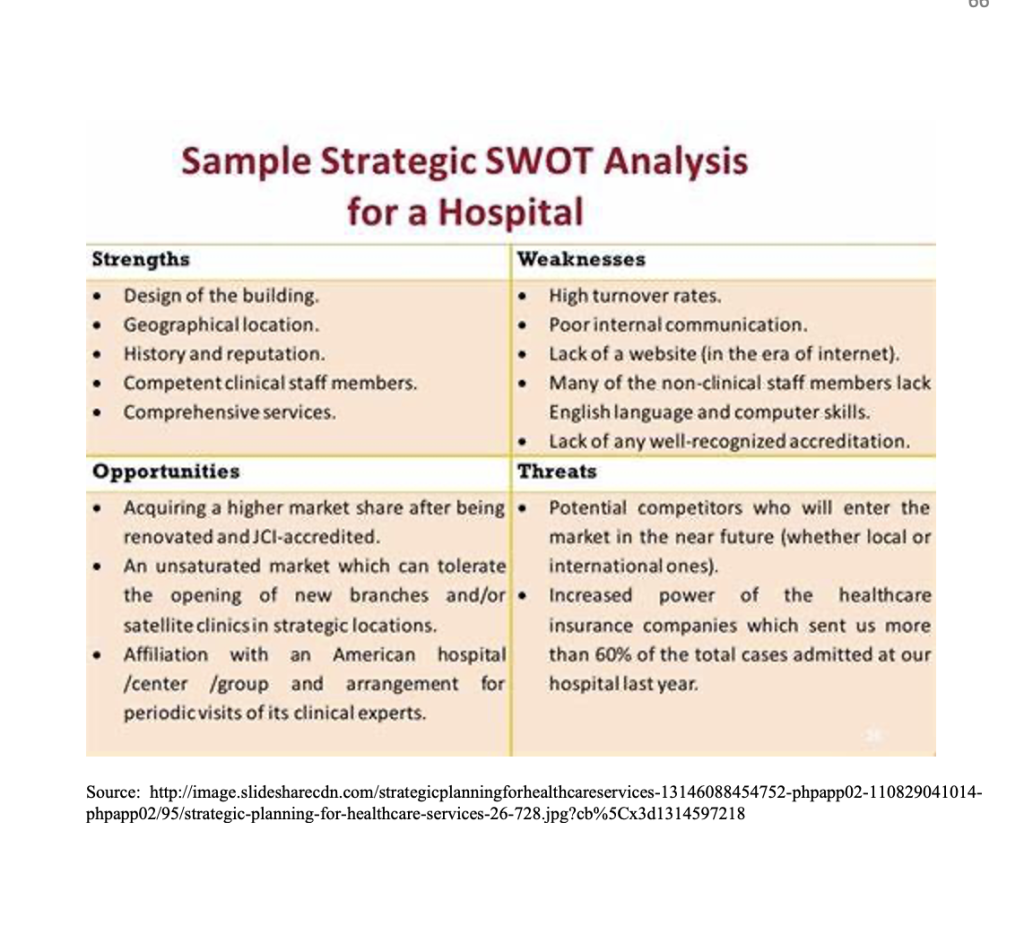7. Mapping Out your Capstone Project
Learning Objectives
By the end of this chapter, you will be able to:
- Explain how visual mapping can be used to organize knowledge and structure for your capstone project.
- Compare and contrast Logic Models and Concept Maps
- Explain how Problem Tree and Root Cause analyses can help you better understand identified problems, issues, or needs and develop methods for addressing them.
- Utilize a SWOT analysis for strategic planning of the capstone process.
Overview
This chapter focuses on visual mapping tools that can help you plan and implement your capstone project. The purpose of Logic Models and Concept Mapping in relation to capstone projects are explained. Problem Tree and Root Cause analyses are described in the context of identifying and planning for capstone project development. Strength, Weakness, Opportunities, and Threats (SWOT) Analysis, as a strategic planning model for capstone development, is also discussed.
Introduction
Visual mapping, as a capstone planning tool, is an excellent way to organize knowledge that can help you to structure, address, and systematically approach your capstone topic. A Logic Model is a graphic depiction, or road map, that presents the shared relationships among resources, activities, outputs, and outcomes/impacts of your capstone project’s activities. The intended effect of a Logic Model is the “if-then” relationship among the project’s elements (Centers for Disease Control and Prevention [CDC], 2018). Concept mapping is a useful tool that can be used to define your theoretical framework and to visually display how it is applied to your literature review (Grant & Osanloo, 2016). Problem Tree analysis, also referred to as Situational analysis, can be used for project planning. Problem Tree analysis can help you find solutions to an identified problem, issue, or need by mapping out the anatomy of the cause and effect (Luma Institute, 2021). Root Cause analysis can be used to discover the root causes of a problem, issue, or need to identify appropriate solutions (Guavera, 2018). Finally, a SWOT Analysis is a dynamic planning model that can be used to plot out a future course for your capstone project by acting on strengths, while minimizing associated risks. It is important for students to develop knowledge and skills with visual mapping models and techniques in order to enhance their capstone project planning and development.
Logic Models
Logic Models provide a visual representation of an entire program in a flow chart format. Logic Models are a systematic and visual way to present and share your understanding of the relationships among the resources you have compiled to conduct your capstone project, the activities planned for implementation, and the anticipated changes or results from project/program implementation.
Components of a Logic Model
Logic models can focus on any level of a program: the entire organization, one of its component departments or programs, or just specific parts of a department or a program. Although logic models differ widely in format and level of detail, the following key terms should be considered in its development (Refer to Table 7.1: Key Terms Used in Logic Models)
Table 7.1: Key Terms Used in Logic Models
| Inputs and Processes |
|
| Activities and Participation |
|
| Outputs |
|
| Outcomes |
|
| Impacts |
Short-term impact focuses on the learning that occurs from the project/program Medium-term impact focuses on actions that have resulted from the project/program Long-term impact focuses on the conditions that have changed as a result of the program/project |
| Moderators |
|
Sources: Centers for Disease Control and Prevention [CDC]. (2018, December 12). Framework step 2 checklist. Centers for
Disease Control and Prevention. Retrieved September 18, 2022, from https://www.cdc.gov/evaluation/steps/step2/index.htm; Doll, J. D. (2010). Program development and grant writing in Occupational therapy: Making the connection. Jones and Bartlett Publishers. (Refer to Appendix 7.A: Sample Logic Model: Community-Based Diabetes Prevention Program).
Concept Mapping
Concept mapping is a useful tool that can be used to define your theoretical framework and to visually display how it is applied to your capstone project’s literature review. Basically, concept mapping is a process for representing and organizing ideas using pictures. The goal of a concept map is to simplify complex concepts using circles, boxes, and/or other shapes that are linked with arrows carrying explanatory legends that depict pictorial connections between ideas (Grant & Osonloo, 2016).
A concept map offers you an instrument to draw a plan for how you will approach your capstone project within a specific theoretical framework. First, you should review literature and organize key issues of interest related to your topic. These are the foundational concepts that support your chosen theory. Next, arrange your ideas in a hierarchical, logical structure. You can start with general ideas and funnel your thinking down to more specific, related topics and ideas. Each idea should have a clear purpose and significance in relation to the aggregate topic. Readers of your capstone project should begin to see a clear picture of your ideas by previewing the organization and identification of your key topics. Visual arrows and connectors should provide insight into how concepts are aligned and connected and illustrate the flow of ideas. Lastly, frame out your entire map with your theoretical framework and your PIO/PICO question (Grant & Osonloo, 2016). Concept maps will help you write a clear literature review in an organized manner that is aligned with your chosen theoretical framework (Refer to Table 7.2: Items to be Included in a Literature Review Rooted in Theory).
Table 7.2: Items to be Included in a Literature Review Rooted in Theory
|
|
|
|
|
|
|
Source: Grant, C. & Osanloo, A. (2016). Understanding, selecting, and integrating a theoretical framework in dissertation research: Creating the blueprint for your “house”. Administrative issues journal: connecting education, practice, and research, 4(2),7.
The ability to construct a concept map illustrates two essential properties of understanding: the representation and the organization of ideas. A holistic view of your developing concept map will allow you to view concepts that may or may not fit with your theoretical framework. Your capstone instructors, and mentor can help you evaluate the feasibility of the theory, plan, and approach to your capstone project (Grant & Osonloo, 2016). (Refer to Appendix 7.B: Sample Concept Map: Person-Environment-Occupation Model).
Problem-Tree Analysis
Problem Tree Analysis provides a template for mapping causes and effects to better understand the chain of connected circumstances that led to a current issue, problem, or need. Using the tree as a metaphor, you separate the causes (roots) from the effects (branches) of a central issue (trunk). Problem Tree Analysis provides a structured way for you to identify concerns, discern causes from symptoms, and potentially frame problem statements in a clear manner. Problem Tree Analysis can help you:
- untangle complex problems
- reveal various causes and effects
- build a shared understanding
- provide a direction for problem-solving
Problem Tree Analysis, which is also known as a Situational analysis or Problem analysis is central in many forms of project and program planning (Luma Institute, 2021). (Refer to Table 7.3: Advantages of Problem Tree Analysis).
Table 7.3: Advantages of Problem Tree Analysis
|
|
|
|
|
|
Source: Planning tools: Problem tree analysis. ODI. (2014, June 27). Retrieved September 18, 2022, from https://odi.org/en/publications/planning-tools-problem-tree-analysis/ (Refer to Appendix 7.C: Sample Problem Tree Analysis: Pediatric HIV)
Root Cause Analysis
Root cause analysis (RCA) is the process of discovering the root causes of problems to identify appropriate solutions. RCA assumes that it is much more effective to systematically prevent and solve for underlying issues rather than just treating unplanned symptoms and putting out fires. RCA can be performed with a collection of principles, techniques, and methodologies that can all be leveraged to identify the root cause of an event or trend. Looking beyond superficial cause and effect, RCA can show where processes or systems failed or caused an issue, problem, or need in the first place. Identifying the root causes of a problem, issue, or need helps in developing more effective strategies to overcome it (Guavera, 2022). There are three basic types of root causes that can have a potential impact on a problem, need, issue, or event:
- Physical causes
- Human causes
- Organizational causes
The first goal of RCA is to discover the root cause of a problem, issue, need, or event. The second goal is to fully understand how to fix, compensate, or to learn from any underlying issues within the root cause. The third goal is to apply what we learn from this analysis to systematically prevent future issues or to repeat successes (Root cause analysis explained: Definition, examples, and methods. Tableau, n.d.).
There are several core principles that guide effective root cause analysis, some of which may be readily apparent while others may not (Refer to Table 7.4: Core Principles of Root Causes Analysis).
Table 7.4: Core Principles of Root Cause Analysis
|
|
|
|
|
|
Source: Root cause analysis explained: Definition, examples, and methods. Tableau. (n.d.). Retrieved September 18, 2022, from https://www.tableau.com/learn/articles/root-cause-analysis
It should be noted that RCA is not a one-size fits all methodology. Rather, there are many tools, processes, and techniques that can be used in conducting in RCAs. Regardless of the technique chosen, the process for Root Cause Analysis remains the same (Refer to Table 7.5: Root Cause Analysis Process).
It should be noted that RCA is not a one-size fits all methodology. Rather, there are many tools, processes, and techniques that can be used in conducting in RCAs. Regardless of the technique chosen, the process for Root Cause Analysis remains the same (Refer to Table 7.5: Root Cause Analysis Process)
Table 7.5: Root Cause Analysis Process
| Realize the problem |
|
| Gather data |
|
| Determine possible causal factors |
|
| Identify the root cause |
|
| Recommend and implement solutions |
|
Source: Guevara, P. (2022, August 12). Root cause analysis: Definition and examples. SafetyCulture. Retrieved September 18, 2022, from https://safetyculture.com/topics/root-cause-analysis/(Refer to Appendix 7.D: Sample Root Cause Analysis: Fall-Related Injuries on Behavioral Health Unit)
Strengths, Weaknesses, Opportunities, and Threats (SWOT) Analysis
A SWOT analysis is a high-level strategic planning model that helps organizations, programs, and/or other entities identify where they are doing well and where they can improve from both an internal and external perspective. A SWOT analysis can help you evaluate your business, program, or other entity by considering multiple factors:
- Strengths and weaknesses (represented as internal factors). Internal factors are considered things that can be controlled. Examples include team members, program content, and geographical location.
- Opportunities and threats (represented as external factors). External factors are considered things that cannot be controlled. Examples include policies and regulations, economic trends, and competitors.
Students can use a SWOT analysis to plot out a future course for their capstone project that will focus on project strengths while minimizing risks. Insights you glean resulting from your SWOT analysis should be used constructively as part of the capstone planning process (Jackson, 2022).
How to Do a SWOT Analysis
Undertaking a SWOT analysis requires planning and organization. The following steps will take you through the process:
- Step 1: Create a SWOT Matrix (Refer to Figure 7.1: Sample SWOT Matrix)
Figure 7.1: Sample SWOT Matrix
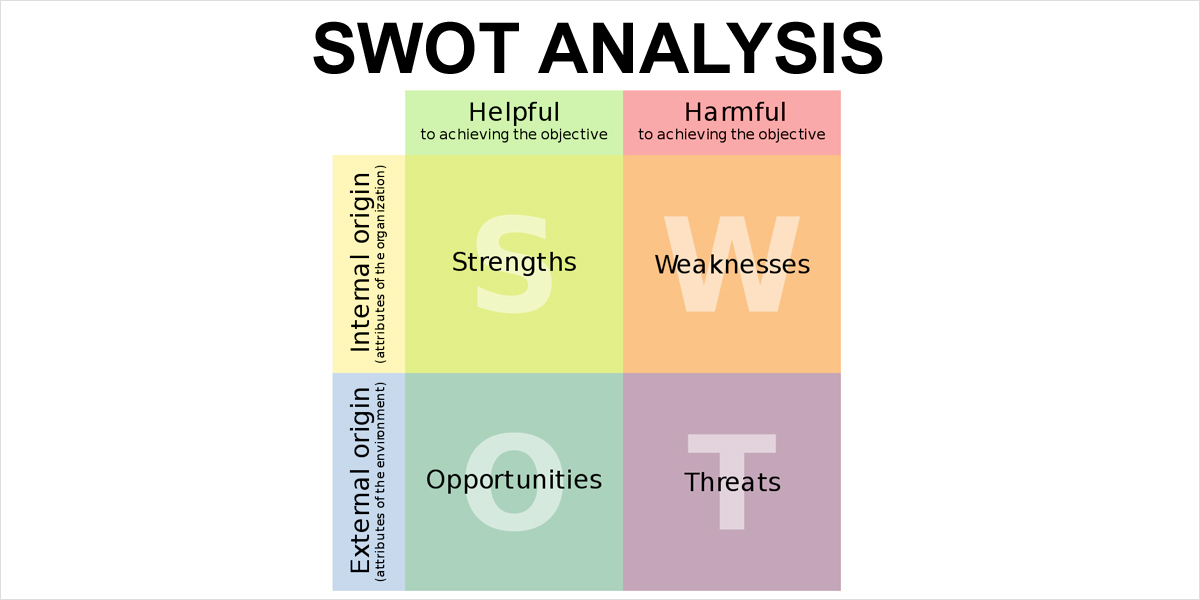 Source: Download free vectors, clipart graphics, Vector Art & design templates. Vecteezy. (n.d.). Retrieved September 23, 2022, from https://www.vecteezy.com/free-vector/swot-analysis
Source: Download free vectors, clipart graphics, Vector Art & design templates. Vecteezy. (n.d.). Retrieved September 23, 2022, from https://www.vecteezy.com/free-vector/swot-analysis
- Step 2: Consider including community, program, and capstone project stakeholders. Including stakeholders input in a SWOT analysis can provide more insight as different perspectives can be considered (Jackson, 2022).
- Step 3: Lists your strengths
- Step 4: List your weaknesses
- Step 5: Identify your opportunities
- Step 6: Identify your potential threats
- Step 7: Examine your Matrix for connections
A SWOT analysis can help you with strategic planning for your capstone project and program development. This tool can help you define objectives, create priority initiatives to help make them a reality. Subsequently, a SWOT analysis can help you to identify measures that help to ensure that your capstone project is unfolding optimally (Refer to Appendix 7.E: Sample SWOT Analysis for a Hospital).
Conclusion
Logic models can be a valuable method for establishing capstone program planning, an implementation plan, and the outcomes or changes you hope to achieve (Doll, 2010). A concept map is an attempt to make explicit your program’s connection with theory so that it can be reviewed by others. While concepts maps provide a visual representation of how you will approach your capstone project in the context of a specified theoretical framework, logic models provide a graphic depiction that presents the shared relationships among the resources, activities, outcomes, and outcomes/impacts of your capstone project’s identified need, problem, or issue. Problem Tree and Root Cause Analyses can help you with your capstone project by identifying how to approach a recognized problem, need, or issue. Finally, a SWOT analysis can be used to evaluate your capstone project by considering multiple internal and external factors that can facilitate effective program development while minimizing risks.
Glynn has continued to meet with their mentor, capstone instructor(s), the institution’s statistician, and librarians.
The guiding theory for Glynn’s research-based capstone project is the Diffusion of Innovations. After performing a literature search to specifically gain more information about this theory, Glynn created the following:
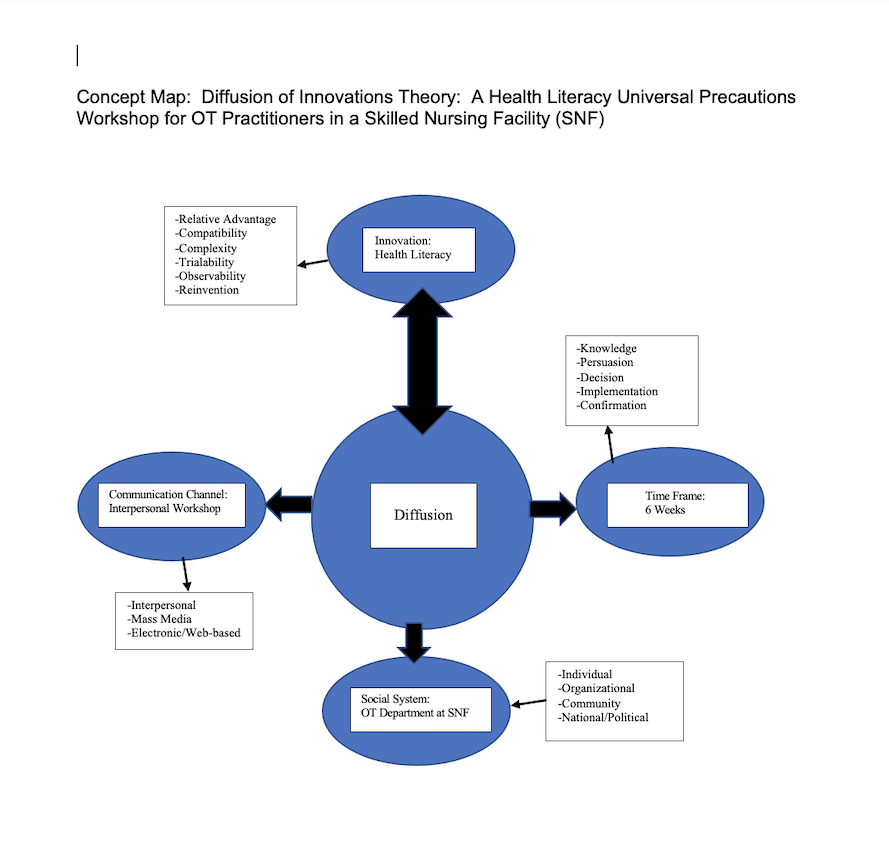
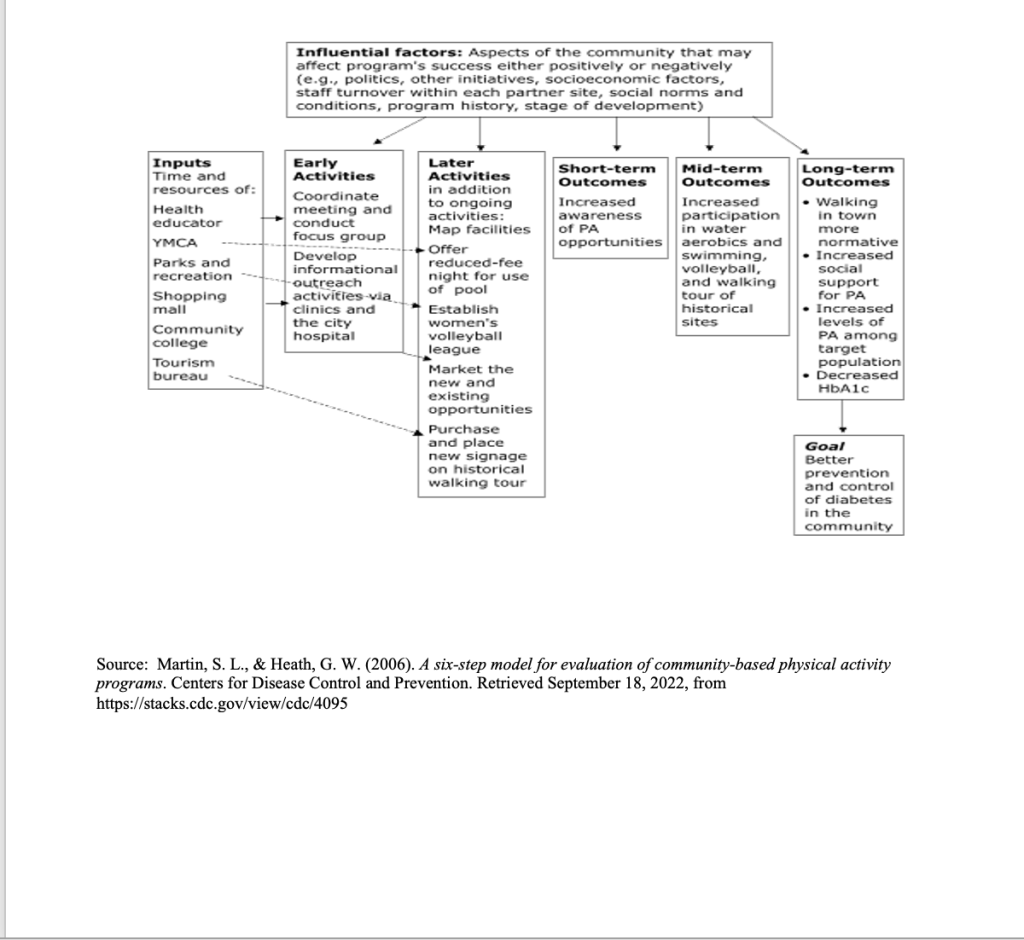
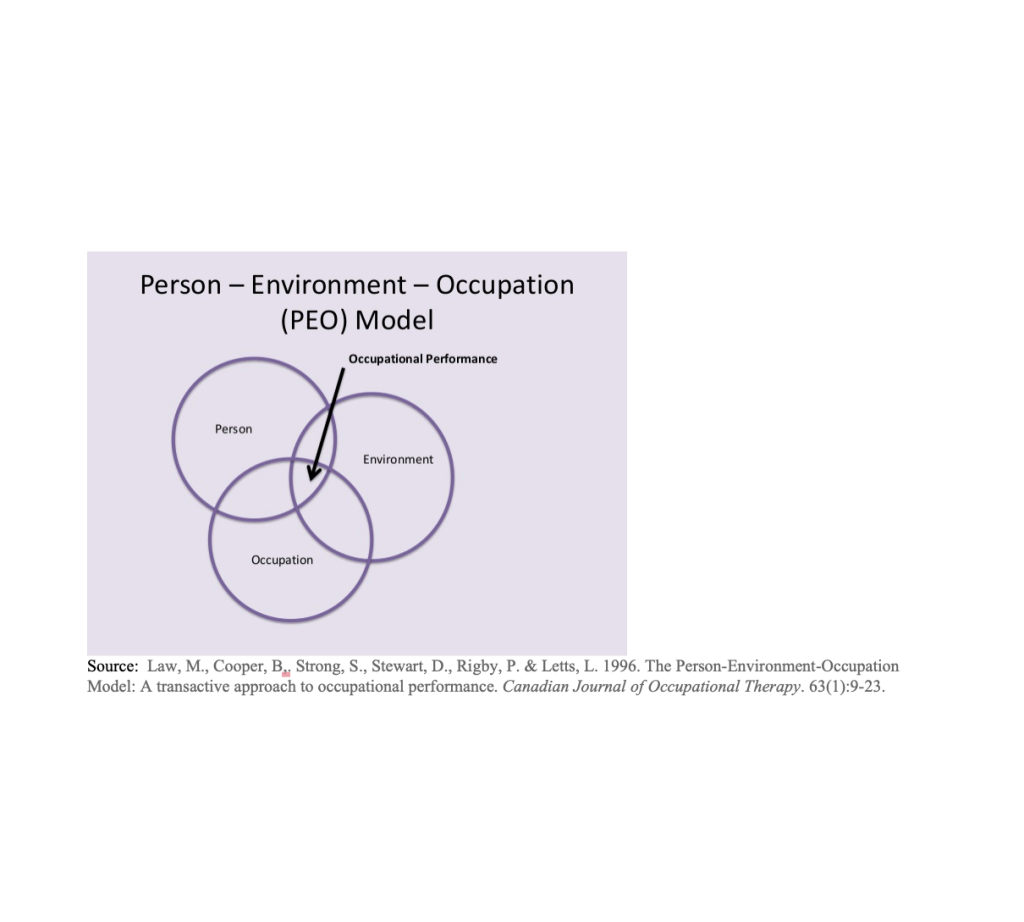
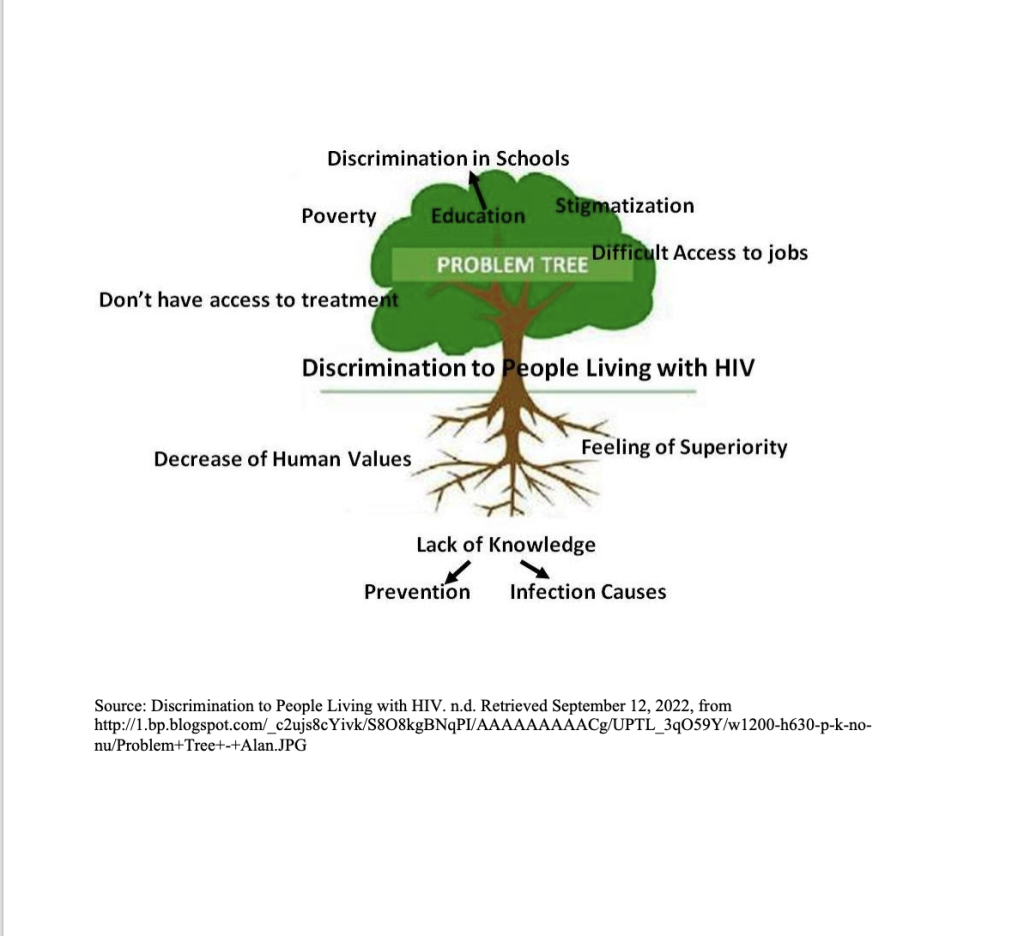
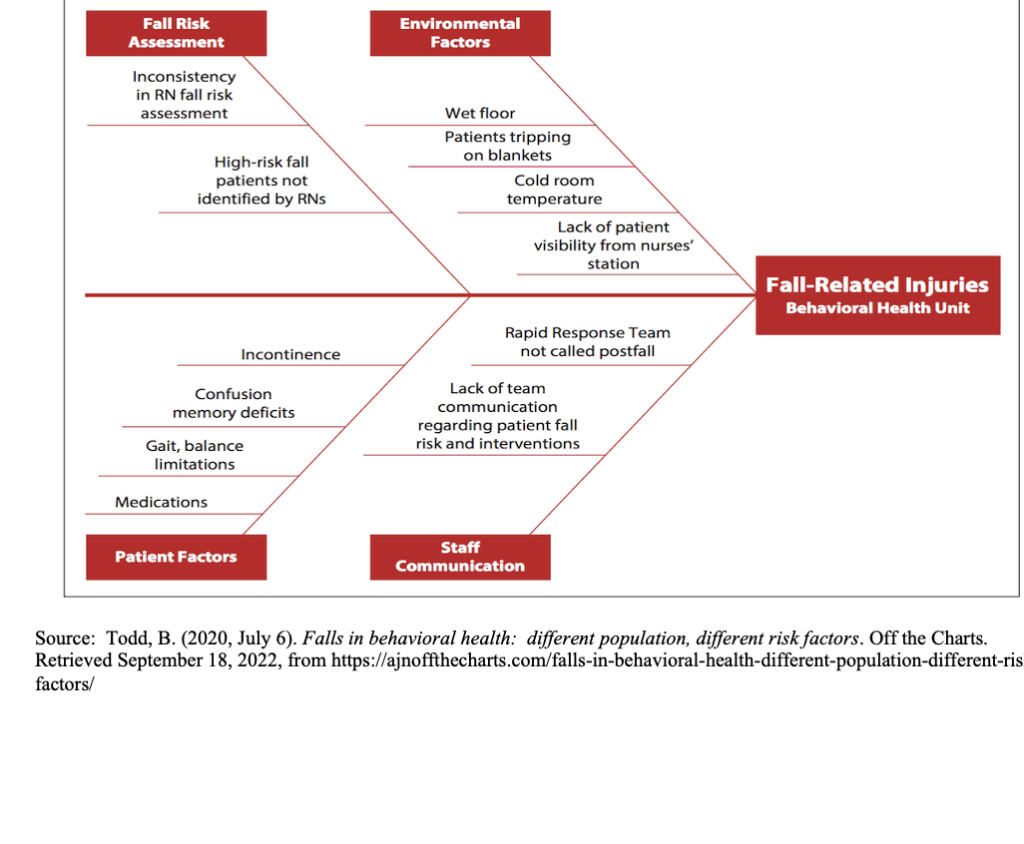
Appendix 7.E: Sample SWOT Analysis for a Hospital
